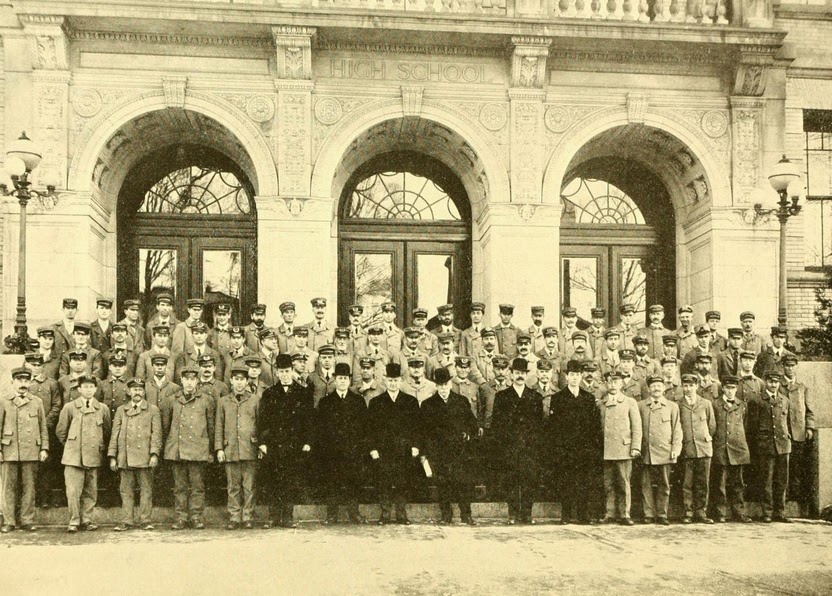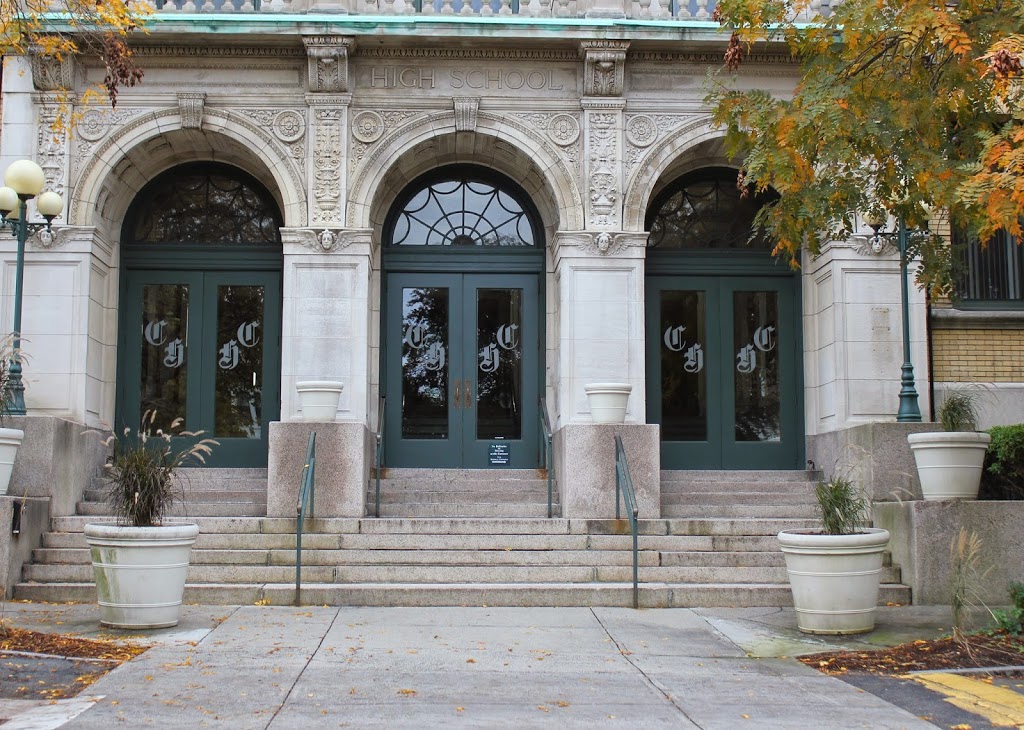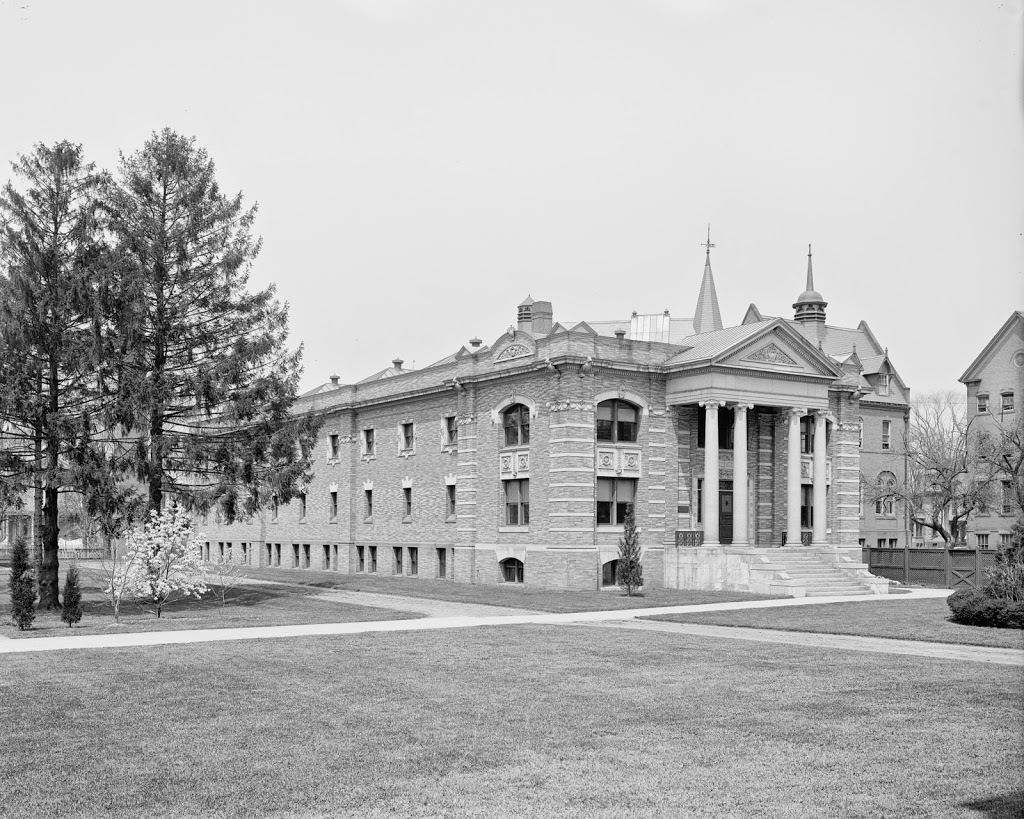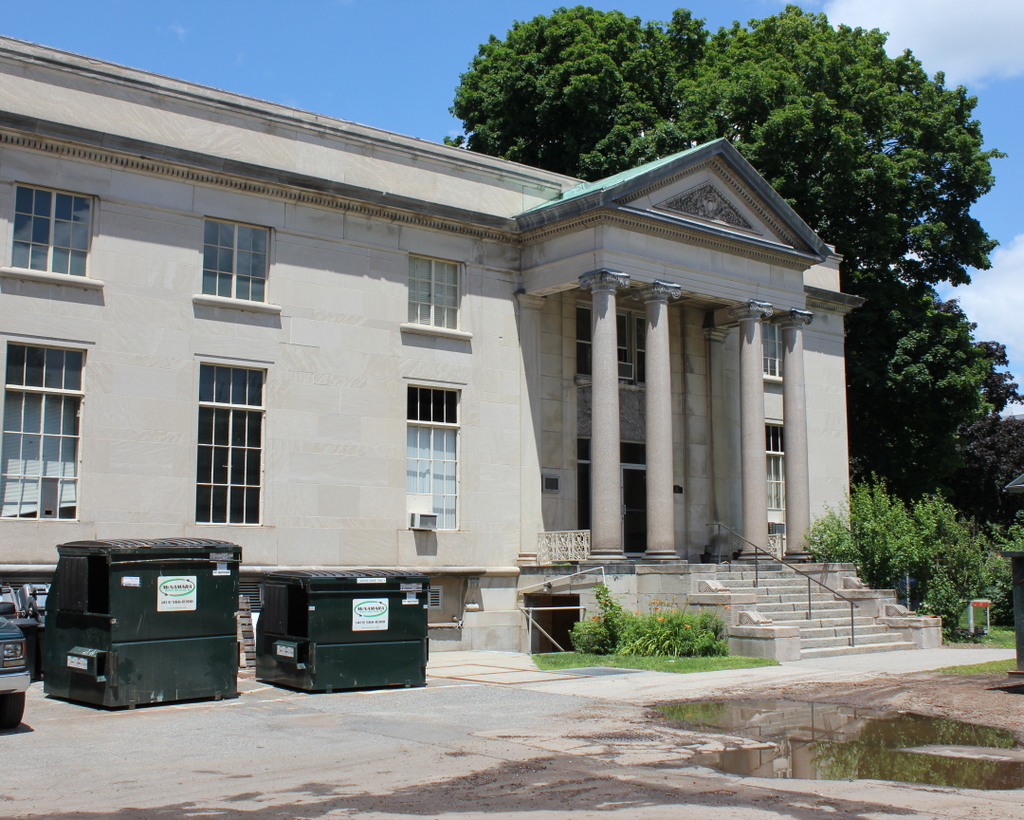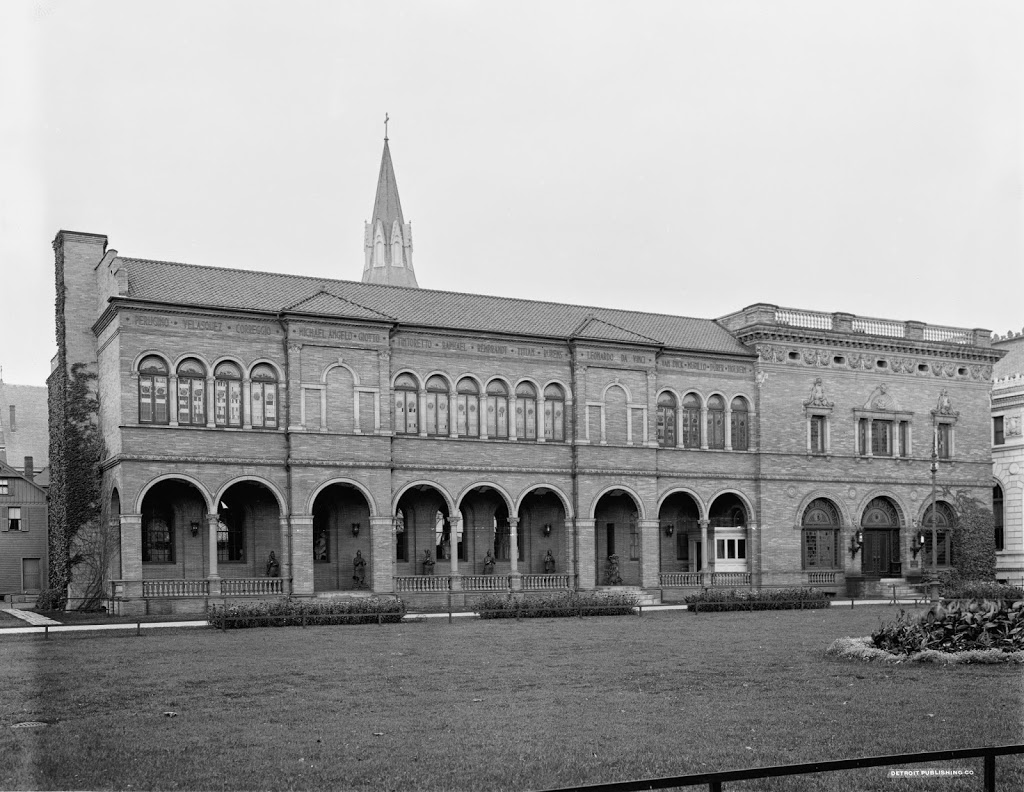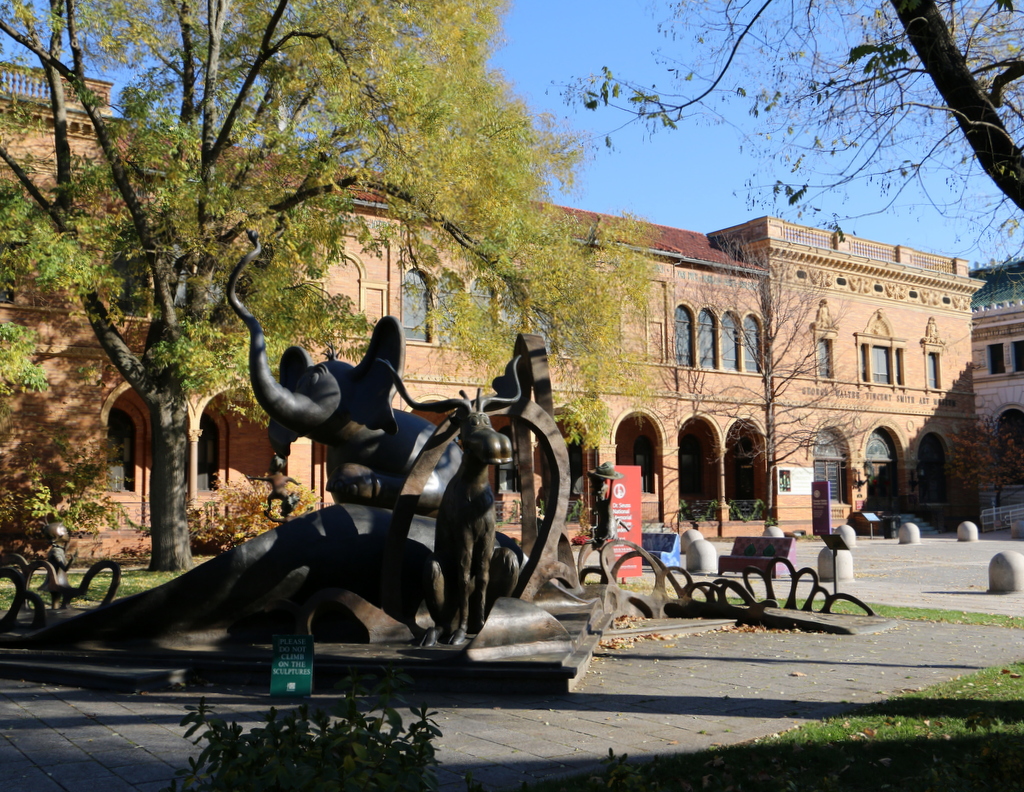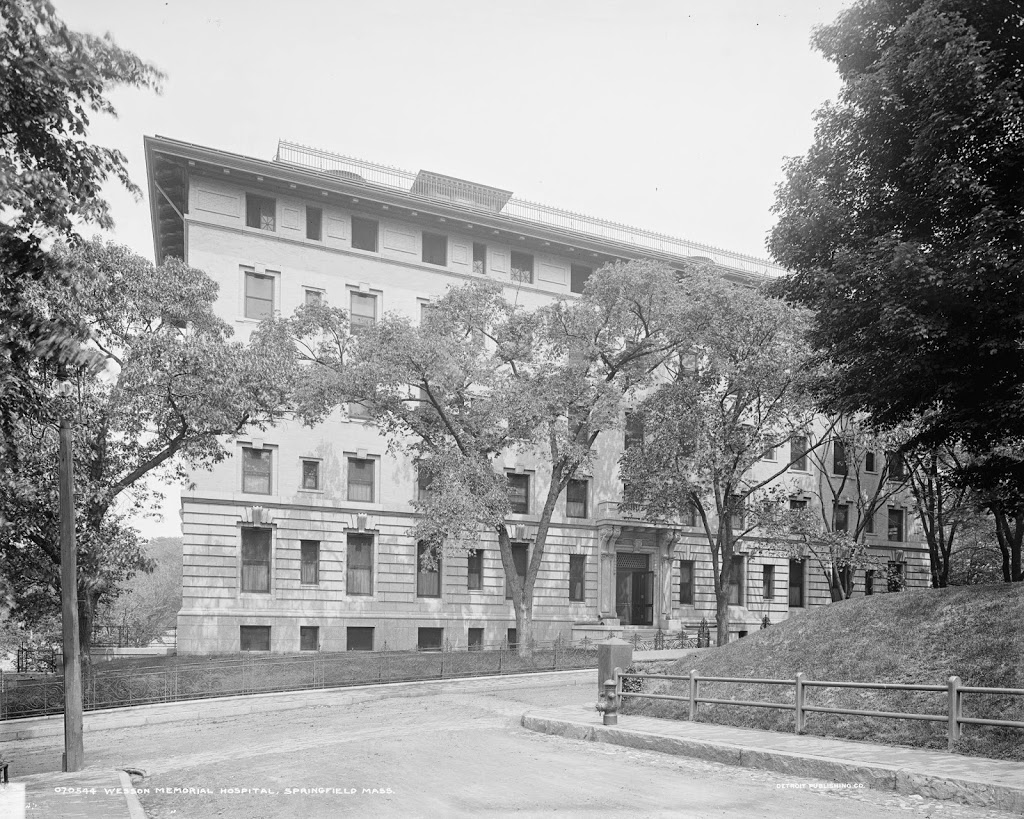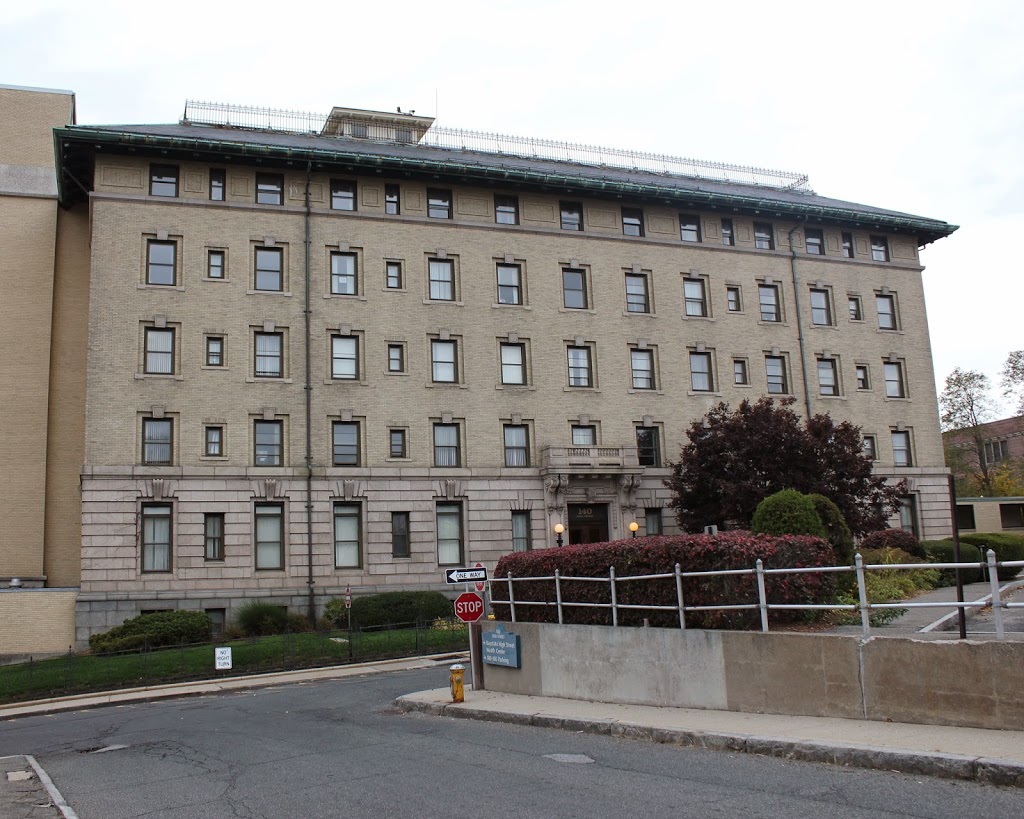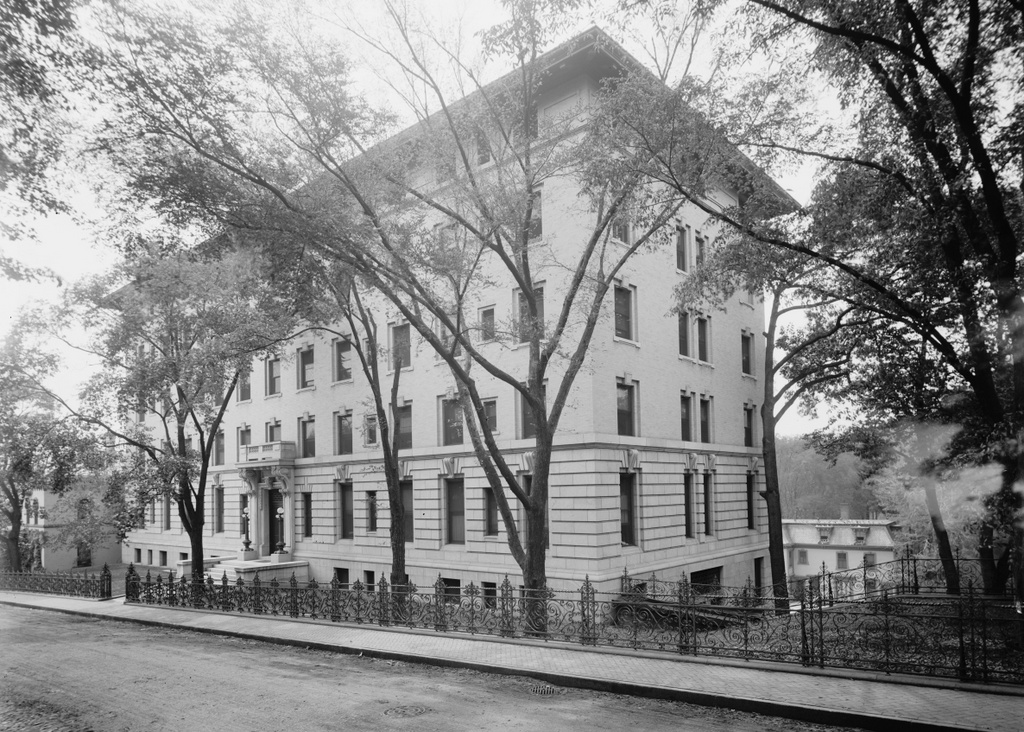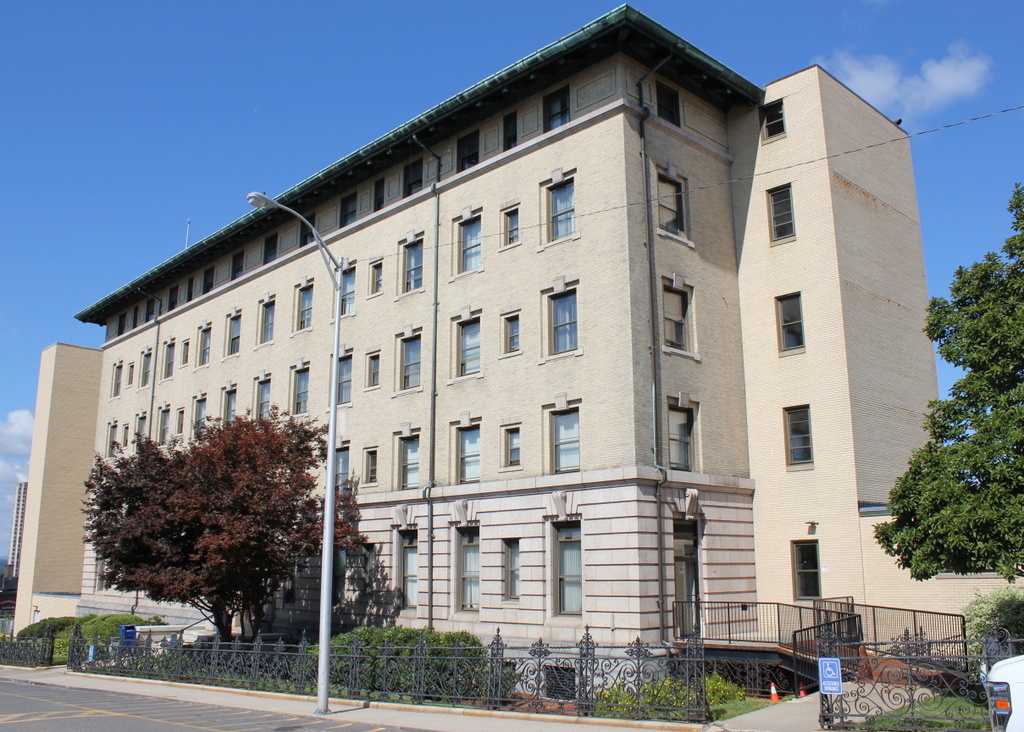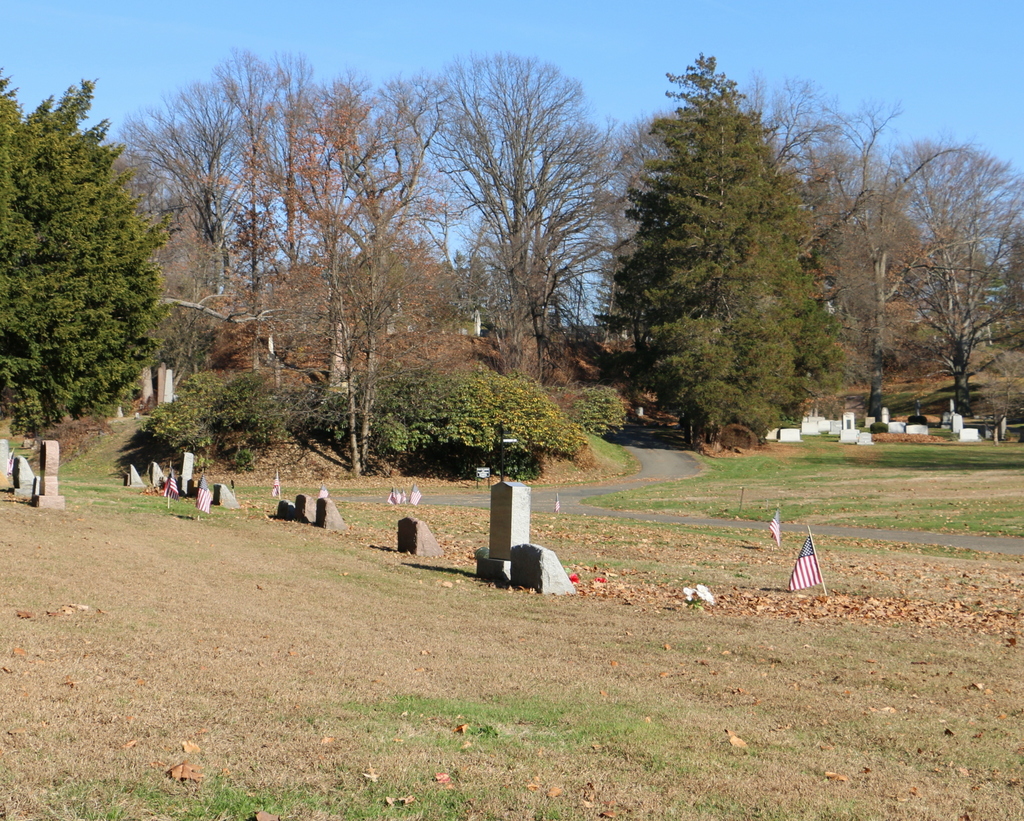A group of postal employees on the front steps of Springfield’s Central High School (later Classical High School) around 1910. Photo from View Book of Springfield (1910).
The building in 2014:
All that I know about the first photo is that it was taken on the front steps of the former high school, which can be seen in this post, and that it was titled “The Post Master and His Corps” in the View Book of Springfield. I’m assuming that means that all of these men are Springfield’s postal employees from a century ago, but the location of the photo puzzles me. It would seem to make more sense to have a group photo of postal workers at, say, the Post Office, but in any case the front entrance where they did pose is still there, mostly unchanged, although the building itself is no longer a school. The school closed in 1986, and today it is a condominium building.

